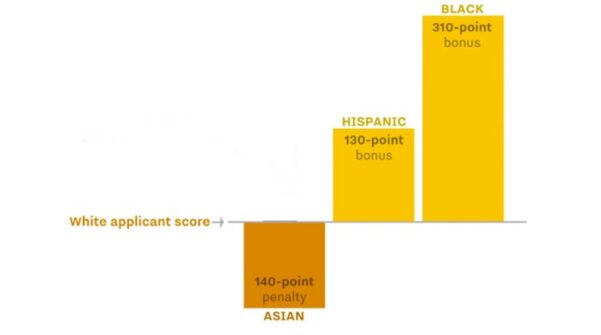Opinion and Commentary By Donna Westfall – June 3, 2023
Being raised in Los Angeles public school during the 1950’s and 1960’s meant Blacks, Whites, Asians and Hispanics were all going to school together and formed friendships. At that time, I didn’t know any Arabs or Middle Eastern students.
Many of us graduated and went on to college or got jobs. President John F. Kennedy was in the White House and we were proud….. and scared during the Cuban missile crisis. Can’t help but chuckle when they told us to get under our wooden desks in the event of a nuclear strike. Like that would work.
De-segregation was happening although with a pretty rough start particularly in the Southern states.
On March 6, 1961 President John F. Kennedy issued Executive Order 10925, which included a provision that government contractors “take affirmative action to ensure that applicants are employed, and employees are treated during employment, without regard to their race, creed, color, or national origin.” But in reality more often than not, Blacks were given jobs based on their race over more qualified that were not Black. That did not bode well and what resulted was animosity.
And, not just government jobs. Look at the college and university admissions. Asians and Whites were being turned away in favor of Blacks and Browns. More animosity.

Credit: @RitaPanahiThis translates into a 140-point SAT penalty for Asians. It’s astounding they didn’t fight this earlier.
Perhaps this picture explains it more clearly. (Based on seven highly selective universities)

WHAT DID THE CASES BEFORE THE SUPREME COURT CONCLUDE?
There were two cases:
University of North Carolina (UNC) and Harvard.
The Supreme Court ruled Thursday that affirmative action policies at UNC and Harvard that consider a student’s race for college admissions are unconstitutional based on the 14th Amendment:
the 14th Amendment: Passed by the Senate on June 8, 1866, and ratified two years later, on July 9, 1868, the Fourteenth Amendment granted citizenship to all persons “born or naturalized in the United States,” including formerly enslaved people, and provided all citizens with “equal protection under the laws.”
The 14th Amendment provides three protections:
1.procedural due process (in civil and criminal proceedings);
2. substantive due process; and
3. as the vehicle for the incorporation of the Bill of Rights.
The vote was 6-3 in the UNC case and 6-2 in the Harvard case in which liberal Justice Ketanji Brown Jackson was recused.


Being born and raised in Dixie, and not moving to a place which I now have renamed to Commiefornia until 16 years ago, I know first hand the negative side of affirmative action in the southern states.
This SCOTUS decision reversing affirmative action for college admissions does not go far enough. It needs to be reversed in hiring preferences as well. Job seekers and employers are forced to hire the less qualified and least motivated based on race, not qualifications. In cities like Memphis, Tennessee, where the combined black and Hispanic population is over 71%, with 61.2 being black, how is it that in Memphis, and many other cities throughout the United States, black and brown populations are an under-represented minority is such a city?
Nepotism, cronyism and affirmative action in hiring for municipal, state and federal government jobs are one of the reasons government is so dysfunctional. Add the private sector hiring practices based on who you know, and not on what you know to that equation, and its no wonder why this country is in the toilet.
Hiring based on something one has earned, such as experience and education is the most preferable method in creating a competent and more productive work force. On the other hand, a disabled US military veteran who’s disability is caused by their military service to this country is given extra points on the application test scoring for federal government employment is based on what that veteran earned, and not that applicant’s race. By and large, US military veterans will take charge and step up to the plate to get the job done without demanding special considerations based on their race. When I was in the US Army, we were all one color — green. Sadly, since the ending of the military draft in the United States some 50 years ago, this country produces very few veterans in these present days. Generations since the draft ended in 1973 just can’t be bothered to serve in the military. Too many just can’t be bothered to take the initiative to put in a fair day’s work for their paycheck either.
For instance, at the United States Postal Service, ten points are added to the passing examination score of: A veteran who served any time and who (1) has a present service connected disability or (2) is receiving compensation, disability retirement benefits, or pension from the military or the Department of Veterans Affairs.